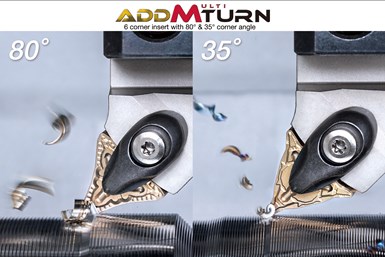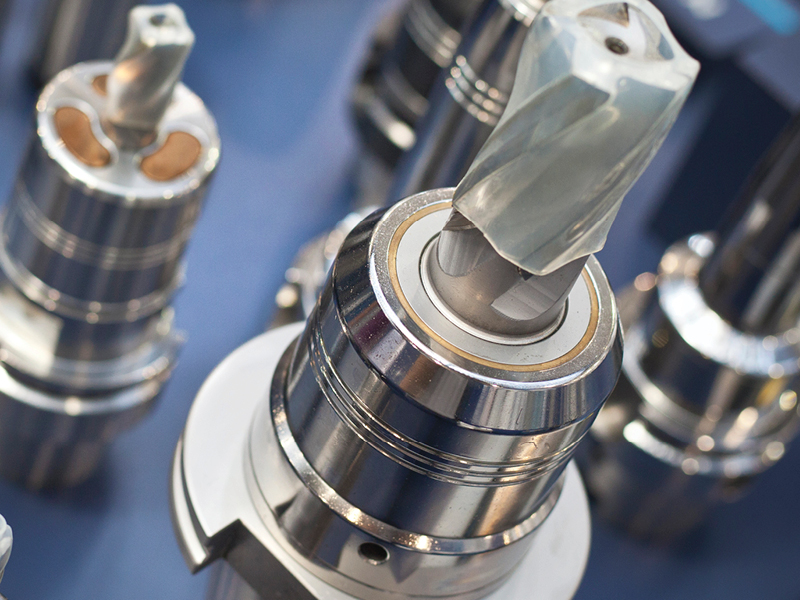Multi-Directional Turning With New Turning Concept
Tungaloy’s AddMultiTurn provides the flexibility for outer diameter, face and profile turning operations in multi directions, which include high-feed back (pull) turning method, enabling toolpaths that turn in the opposite direction of conventional turning process at higher feeds.
Tungaloy has launched a new turning tool concept, AddMultiTurn, which features unique insert and toolholder geometries that enable multi-directional turning.
AddMultiTurn provides the flexibility for outer diameter, face and profile turning operations in multi directions, which include high-feed back (pull) turning method, enabling toolpaths that turn in the opposite direction of conventional turning process at higher feeds. Multi-directional turning reportedly optimizes the toolpaths by eliminating air cutting times. The shapes of the AddMultiTurn inserts enable the user to achieve a much smaller entry angle and thinner chips for higher machining efficiency, which spreads load and heat over a longer cutting edge length, providing extended insert tool life.
AddMultiTurn uses two styles of inserts depending on the application, both of which feature a double-sided design with six total cutting edges: 6C-TOMG..TM inserts with 80° nose angle are designed for medium to rough turning and 6V-TOMG..TSF inserts with 35° nose angle is suited for finish turning. Both inserts enable a back (pull) turning method, which the company says can contribute to higher productivity and reduced machining costs compared with conventional ISO turning inserts. AddMultiTurn inserts can also be used for push turning just as with ISO turning inserts.
In addition, the Y-Prism safe lock design provides a rail on the shim and matching slots on the insert, reportedly ensuring tight interlocking and secure clamping of the insert during high productive multi-directional turning.
RELATED CONTENT
-
Taking The Fear Out Of Hard Turning
To make the transition to hard turning, you'll need to switch from carbide to CBN inserts, but that is easier (and more economical) than you might think. It's making the jump to much higher surface speeds that might scare you off. It needn't. Here's why.
-
Inserts For Difficult Materials
Economic efficiency is an important consideration when choosing tools for challenging metals.
-
Start With The Right Speeds And Feeds
Running rotary milling cutters at the proper speeds and feeds is critical to obtaining long tool life and superior results, and a good place to start is with the manufacturer's recommendations. These formulas and tips provide useful guidelines.










 (1).1676494398075.png)

